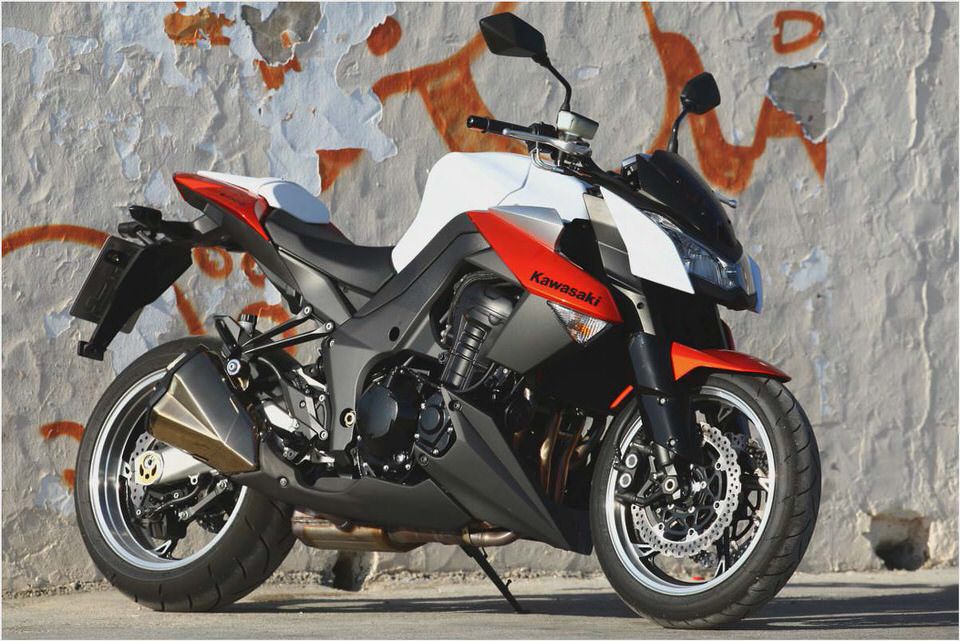
1101_sbkp_22_z+2011_kawasaki_ninja_1000+riding.jpg
2011 Kawasaki Ninja 1000
For the last several years the sportbike market has been dominated by motorcycles designed primarily for the track with nothing more than headlights and signals to make them street legal. But that left a little to be desired for riders not fully committed to a race replica. There’s something special about a naked bike that sportbikes can’t compete with-rawness and pure simplicity.
In 2010 Kawasaki released the Z1000 to an unsuspecting market and rewrote the definition of what a naked bike should be. But for some reason, the streetfighter style just doesn’t seem to appeal to the American bike buyer. Kawasaki listened to the outcries from both sides and has released a new wolf, but it’s not wearing sheep’s clothing.
The Ninja 1000 was designed as a sportbike for the street rider first and foremost. That includes accessible power at low speeds, neutral handling and a comfortable riding position. It’s being billed as a high performance sportbike with everyday versatility.
The Belly
The Ninja 1000 uses the same drivetrain as the Z1000, and that’s a good thing. The 1043cc DOHC 16-valve inline-four features a longer stroke for more power down low where it counts. This pays huge dividends on the street as the torquey motor helps get the 500-pound beast shooting out of the gate like Seabiscuit on steroids. According to Kawi, it makes 65 percent more torque than a ZX-6R and the same as the mighty ZX-10R.
The power is very linear, but a second hit of horsepower coming in around 7000 RPM that pulls all the way to an 11,000 RPM redline. The result is an expansive power band that is user friendly anywhere and anytime.
The Beauty
Styling a sportibke is always a compromise of functionality versus form. Race bikes are designed to slice through the air while the rider is in a full tuck. But hunching over on the highway not only looks ridiculous, it’s extremely uncomfortable. The Ninja 1000 was designed to combine racer-boy looks without forcing the rider to assume the fetal position for wind protection.
The windscreen can be manually adjusted upward in three stages for added protection. It’s a two-handed job to change the height and can be a bit tricky to adjust when rolling down the road though.
The bodywork features ZX-inspired headlights, LED taillight, integrated front signals and a sleek tail section. Passenger grab rails also come standard (but should be immediately removed to give the Ninja 1000 street cred). The large swooping side panels serve to redirect the hot engine heat up and away from the rider.
The overall look and feel falls somewhere between the dad at the disco and an underage kid with a fake ID, and neither would look out of place riding it.
The Beast
Don’t let the optional saddle bags fool you; the Ninja 1000 is all sport when it comes to handling. With fully adjustable 41mm inverted forks, and 300mm radial mounted brakes, this bike is meant to tackle just about any terrain in a given day. The best way to describe the ride quality is summed up in a single word. easy.
The suspension absorbs the rocks and bumps that are commonly found on back roads and highways yet it still tips over quickly and isn’t afraid to come out fighting when things get twisted.
The upright riding position is definitely a treat when the road goes flat and it’s time to head home. Rubber-coated foot pegs absorb lots of the engine vibration and the individually mounted handlebars can be adjusted to fit a variety of frame sizes. After nine hours in the saddle, not once did I have to play slap and tickle with a set of numb hands-a common occurrence on buzzy sportbikes.
If having a lady on the back is part of your intended sportbike ownership experience you’ll (both) be happy that the Ninja 1000’s designers actually thought about passengers instead of slapping on a vinyl wrapped piece of plywood as an afterthought. The rear seat is thicker, longer and wider than traditional sportbike seats and will keep both rider and passenger comfortable for hours.
The Buyer
So who is this bike made for? According to the big K it’s made for the sportbike rider who wants performance, the cruiser looking for comfort and the sport tourer looking for convenience.
Leave the track bikes for the track. In the day-to-day jungle the Ninja 1000 was built to tackle the struggles on the street. In essence, Kawasaki has successfully made a motorcycle for the everyday rider.
2011 Kawasaki Ninja 1000
Engine: 1043cc, inline-four, 16-valves/cylinder, est. 130 HP
Front Suspension: Fully adjustable 41mm USD forks
Rear Suspension: Fully adjustable shock
Front Brakes: Dual 300mm petal-type rotors with radial-mount four-piston calipers
- SuperTrapp Aluminum Racing Series Slip On Motorcycle Exhaust For Kawasaki…
- 2009 Kawasaki Concours 14 Comparison – Motorcycle USA
- 2010 Kawasaki Concours 14 First Ride – Motorcycle USA
- Latest Kawasaki KX 450F & 250F Lineup Announced for 2014 – Kawasaki Forum…
- Kawasaki’s’ Concours 14

